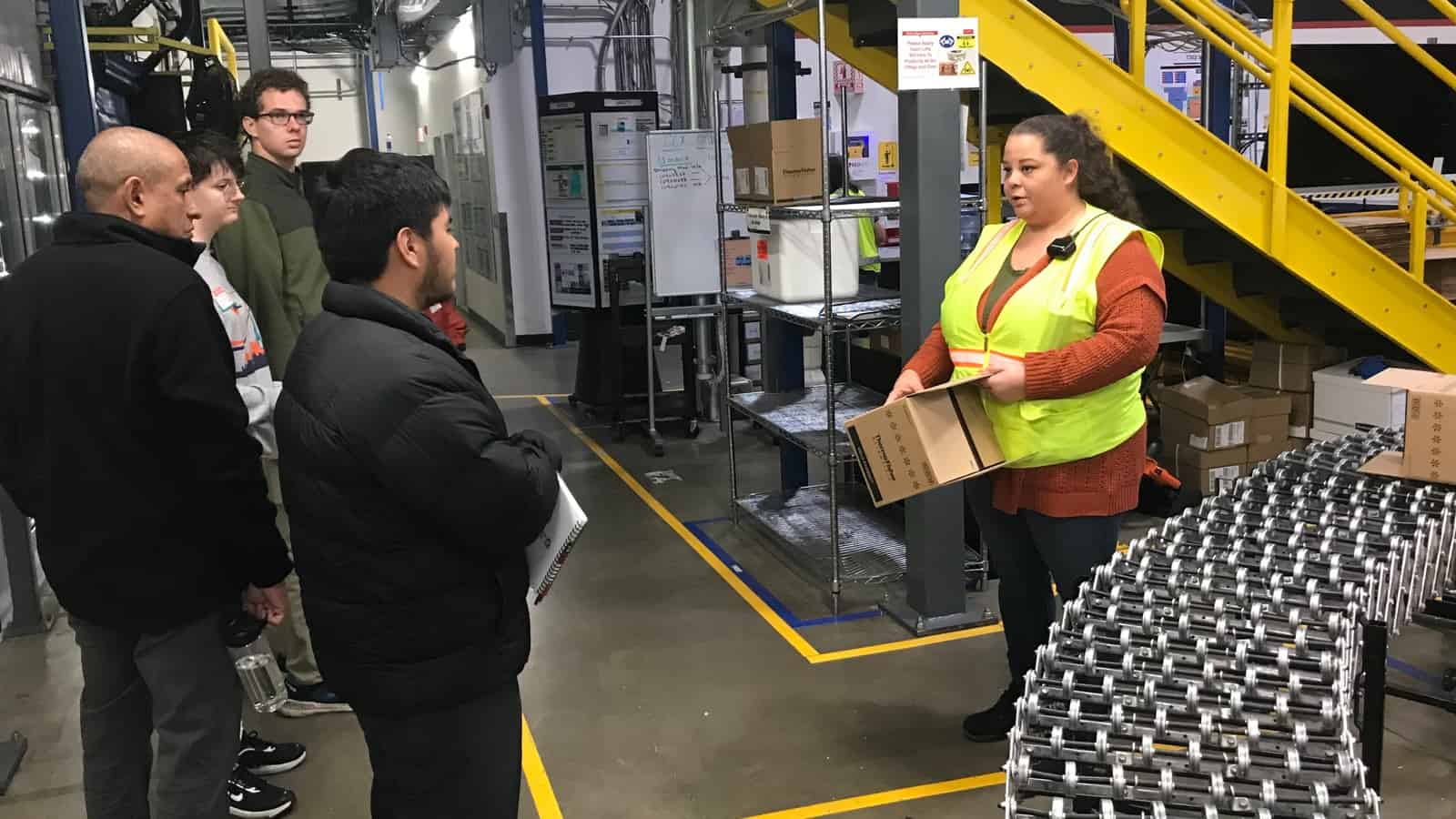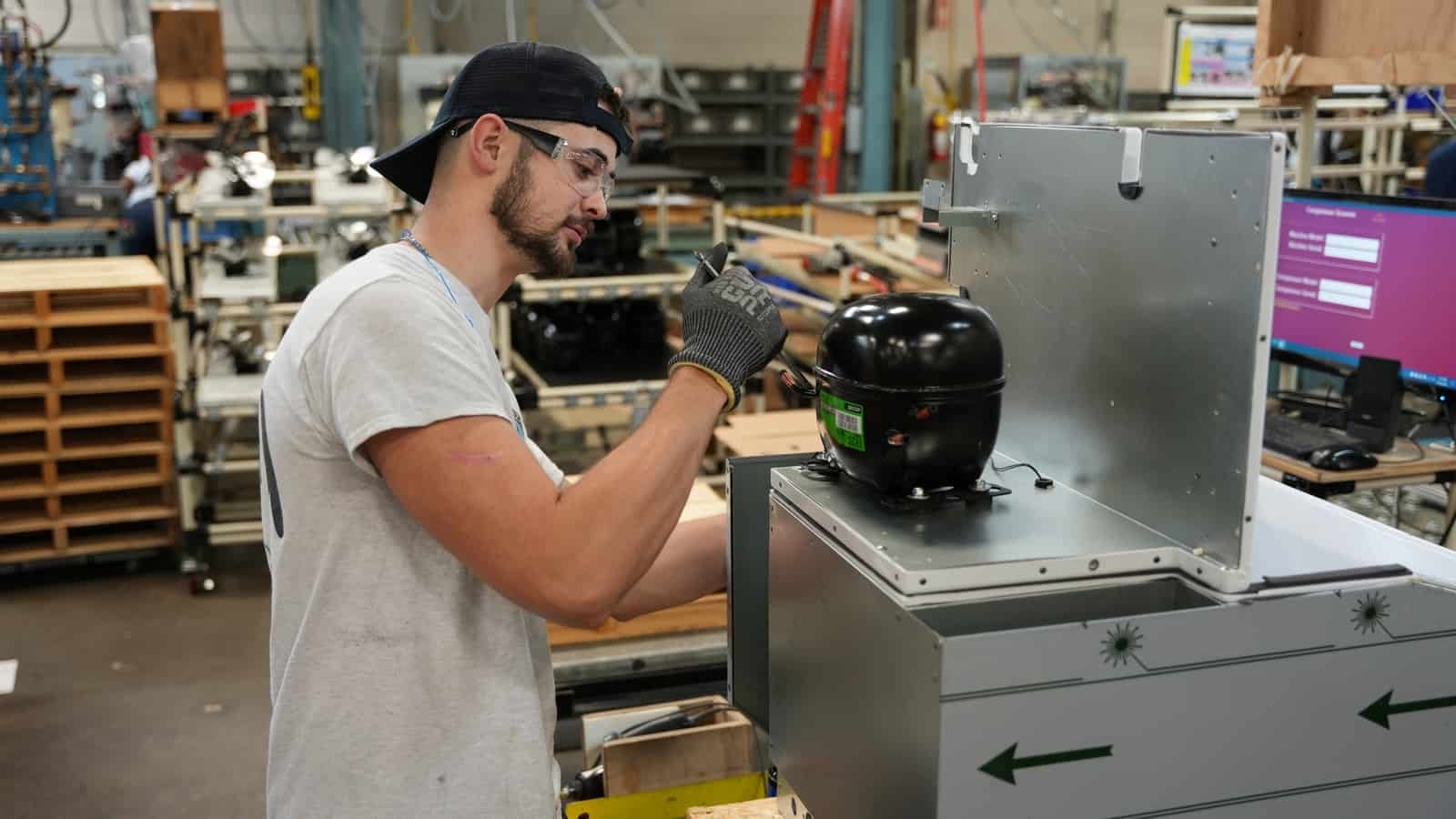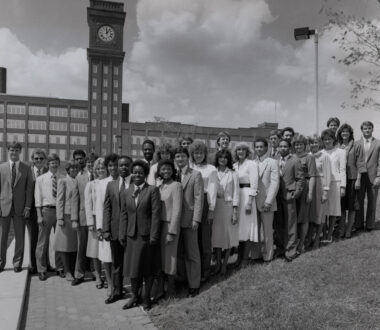New Study: “Right-to-Repair” Stifles Innovation, Threatens Consumer Safety
Washington, D.C. – The National Association of Manufacturers released a new study, “The Economic Downsides of Right-to-Repair,” which highlights the cost to the environment, consumer safety and manufacturing innovation of providing unfettered access to complex software and components in manufactured goods. The study analyzes the wide range of unintended and potentially harmful consequences of “right-to-repair” legislation.
The study finds that instituting “right-to-repair” polices directly counteracts many federal laws put in place to protect both manufactures and consumers. The study states that, “bypassing the proper channels for repair will come at a steep cost to quality, performance, consumer safety, the environment and the broader U.S. economy.”
Notably, “right-to-repair” policies could seriously disrupt original equipment manufacturers’ supply chains, which would leave many consumers—especially in rural communities—without a reliable and efficient place to get a repair. “This could increase costs for customers significantly, as delays in placing equipment back in service directly affect a business’s bottom line,” the study warns. The study further highlights an Environmental Protection Agency estimate that more than 500,000 tons of excess emissions have entered the atmosphere since 2009 due to operators disabling or modifying emission controls in vehicles across multiple industries.
“For decades, manufacturing innovation has created new products and technologies that improve modern life,” said NAM Managing Vice President of Policy Chris Netram. “Unfortunately, so called ‘right-to-repair’ policies would threaten these programs, resulting in harm to the environment and putting American’s data and safety at risk.”
Background: In 2021, President Joe Biden signed an executive order encouraging the Federal Trade Commission to enact policies limiting OEMs’ ability to prevent nonauthorized entities from performing certain repairs. The NAM submitted comments to the FTC, calling “right-to-repair” legislation a, “solution in search of a problem.” As of 2023, New York, Minnesota and Colorado have enacted “right-to-repair” legislation, and 23 other states have also considered legislation that would force manufacturers to provide direct access to replacement parts, grant unfettered access to the central processor and further limit their ability to constrain what consumers can do with their product.
-NAM-
The National Association of Manufacturers is the largest manufacturing association in the United States, representing small and large manufacturers in every industrial sector and in all 50 states. Manufacturing employs nearly 13 million men and women, contributes $2.91 trillion to the U.S. economy annually and accounts for 53% of private-sector research and development. The NAM is the powerful voice of the manufacturing community and the leading advocate for a policy agenda that helps manufacturers compete in the global economy and create jobs across the United States. For more information about the NAM or to follow us on Twitter and Facebook, please visit www.nam.org.
How Manufacturing Leaders Are Bolstering Their Cyber Defenses

Cybersecurity threats are increasing, while budgets are getting tighter—so what are C-suites doing about it? The NAM, in partnership with PwC, recently conducted a survey of cyber leaders at manufacturing companies to reveal how they think about their operational security and where they aim to make progress.
Why they do it: When asked why their companies are reinforcing the security of their operational technology, cyber leaders showed that they are thinking deeply about their firms’ long-term development.
- Nearly 50% of respondents said they aimed to defend against ransomware—a smart response, given that 2022 saw almost double the number of ransomware attacks on industrial environments as 2021. Worse yet, 70% of those attacks targeted manufacturers.
- The second most popular answer, however, was the companies’ own internal roadmaps outlining their priorities and technology requirements. This shows how integrated cyber defenses are into companies’ long-term plans; they know that as their operations grow more sophisticated and complex, their cyber defenses have to do so as well.
- Last, cyber leaders also cited the evolution of “Manufacturing 4.0,” as they recognize that the rising sophistication of factories and “smart” technology increases attack surfaces and vectors, therefore requiring smarter and more extensive cybersecurity.
Another positive sign: One of the key indicators of success for cyber leaders is whether their IT teams—which traditionally handle cyber defenses—are in sync with their teams handling operational technology.
- On that score, the survey had good news: more than 30% of respondents said those teams were fully integrated at their companies, and almost 40% said they were partially integrated.
Reporting back: A cyber chief needs to keep the rest of the C-suite and the board informed, but not overwhelmed. So what do they tell other company leaders?
- Nearly 80% of respondents said they give updates on what you might expect: the deployment of technical controls or countermeasures to attacks, as well as progress in implementing their roadmaps.
- About 50% of respondents also said they give updates on security audits, and almost 40% provide reports on compliance with regulations.
In their own words: Several CISOs who reviewed these findings for the NAM explained the reasoning in greater detail:
- One CISO said that “getting into quantitative discussion with boards around risk is hard, so the easier route is to do implementation updates, which provide measurable results.”
- Another CISO said “it’s better to share about what is being done, including patches and roadmaps [than overloading boards with background information].”
Get involved: Are you interested in finding out firsthand how companies handle real cyber challenges? Tell your CISO about the Manufacturing Cybersecurity Advisory Council, a group of CISOs from around the industry who gather every other month for a confidential discussion moderated by the NAM’s COO, Todd Boppell.
- The meetings feature guest speakers, feedback on important issues and discussions of current trends, with a focus on how CISOs at large manufacturers should handle threats throughout the supply chain.
Weigh in: If you’d like to share your company’s own approach to operational technology security, you can take the NAM and PwC’s survey yourself!
Further reading: Lastly, check out PwC’s list of tips for companies looking to beef up their cyber defenses.
NAM Bolsters Government Relations Leadership
Washington, D.C. – The National Association of Manufacturers named Stef Webb as its new Managing Vice President of Government Relations. Webb joins the NAM from Gopuff, the fast-growing $15 billion global consumer goods and food delivery company, where she served as director of corporate affairs, helping to establish its federal affairs program and spearhead public and government affairs during key market entries globally.
“Whether she’s bringing together lawmakers and line workers in Midwest manufacturing facilities or building relationships on Capitol Hill or in world capitals, Stef has built a sterling reputation as an effective and collaborative advocate who does not relent until the policies or priorities she’s fighting for are across the finish line,” said NAM President and CEO Jay Timmons.
Reporting to NAM Executive Vice President Erin Streeter and working alongside the organization’s broader advocacy leaders, Managing Vice Presidents Jamie Hennigan (Communications and Public Affairs), Chris Netram (Policy) and Chrys Kefalas (Brand Strategy), Webb will lead the association’s government relations strategy to advance the competitiveness of manufacturers in the United States.
“In this unpredictable and fast-changing political environment, it’s never been more important to have a government relations team that is steps ahead of where the policy opportunities and challenges could go,” said Streeter. “With Stef helping to lead our team, we’ll build on our track record of preparing for tomorrow, anticipating future needs and being a credible and trusted go-to voice and resource for manufacturers and our nation’s leaders.”
Webb brings proven experience in many areas critical to continuing to drive unapparelled results for the industry. She has held leadership roles in government relations, policy, political fundraising, political affairs, communications, membership, finance and operations. Prior to Gopuff, Webb served as director of federal government affairs at NAM member company Anheuser-Busch, showcasing her ability to bridge divides, winning support for key manufacturing priorities in the United States and creating initiatives—like Brew Across America—that brought policymakers together. During this part of her career, Webb’s successful and effective advocacy work first came to the attention of Timmons and Streeter.
“Manufacturing is the backbone of the American economy and the foundation of business in America, impacting nearly every industry and person,” said Webb. “The NAM has built a reputation as the most trusted voice and resource for manufacturers in the United States, and I’m excited to join this team to create an even better environment for manufacturers to compete, to create more jobs and to improve lives.”
Webb also serves her country as an officer in the United States Navy Reserve.
-NAM-
The National Association of Manufacturers is the largest manufacturing association in the United States, representing small and large manufacturers in every industrial sector and in all 50 states. Manufacturing employs nearly 13 million men and women, contributes $2.91 trillion to the U.S. economy annually and accounts for 53% of private-sector research and development. The NAM is the powerful voice of the manufacturing community and the leading advocate for a policy agenda that helps manufacturers compete in the global economy and create jobs across the United States. For more information about the NAM or to follow us on Twitter and Facebook, please visit www.nam.org.
Thermo Fisher Scientific Opens Doors—and Career Paths—to Students on MFG Day

If you’re a jobseeker, Thermo Fisher Scientific wants you to know there are a plethora of job opportunities available at the company whether you have a science or engineering background or not.
At a well-attended MFG Day event for college students at its Frederick, Maryland, campus in October, both attendees and current employees said they were amazed to learn of the wide array of positions available at Thermo Fisher, a maker of life-sciences solutions and equipment.
Choose your own (career) adventure: “There’s a lot of opportunities here,” said Jude Ankrah, a cyber security engineer at the company’s Frederick location and one of the MFG Day’s event ambassadors, who helped lead student tours. “You can … make your own opportunities. There’s so much [internal] career movement. And it’s so flexible.”
- The MFG Day event drew about 60 students from four local colleges. It consisted of tours of the site’s distribution center, research-and-development cell biology building and corporate infrastructure and security center.
- Juan Argueta, who is working toward a cybersecurity degree at Frederick Community College, said he hadn’t expected the life-sciences giant to need people with his expertise.
- “I found out about it at school. I checked [the website], and there are actually a lot of openings in cybersecurity here,” Argueta told the NAM. “So I decided to come. There are so many great benefits [at Thermo Fisher]—including tuition reimbursement—for employees.”
Science not required: It’s a widely held misconception that people working at Thermo Fisher are all scientists and engineers, said Lisa Sweeney-Walker, senior executive assistant to Chief Scientific Officer Dr. Karen Nelson.
- “You don’t have to have a Ph.D. [or even] a science background” to get hired at Thermo Fisher, she said. “We have human resources, we have warehousing positions, we have other things.”
- In fact, the Frederick campus’s largest number of job openings is in manufacturing and distribution, said Frederick Site Leader and Senior Director of Manufacturing Operations Keith Howell, who spoke before the site tour. “We need both college-educated and non [degree-holding] hires,” he said.
Great strides: Thermo Fisher is doing some amazing things in science—and MFG Day attendees were able to watch some of its operations through interior windows at the R&D cell biology building.
- There, chemists are working to create “shells” for the next mRNA vaccines, Thermo Fisher Director of R&D David Kuninger told event attendees.
- Scientists at the company—who developed many of the tools involved in CAR T-cell therapy, a cell-based treatment technique in which a patient’s own T-cells are “programmed” in a lab to find and fight cancer cells—are now engineering an immune cell to fight cancer, he continued.
A path at Thermo Fisher: Regardless of your career interests, you’re likely to be able to pursue them at Thermo Fisher, said Shayne Boucher, a staff scientist in cell and gene therapy at the company.
- “Everyone has their own unique path,” he told the students. “There is an opportunity here to find out what works for you.”
Manufacturers: AI Represents a Tremendous Opportunity for Modern Manufacturing
Washington, D.C. – Today, following the release of President Joe Biden’s Executive Order on Artificial Intelligence, National Association of Manufacturers Managing Vice President of Policy Chris Netram released this statement:
“Artificial intelligence represents a tremendous opportunity for modern manufacturing. AI is already helping manufacturers improve safety and training and empower workers to be even more innovative. It is unlocking incredible opportunities for predictive maintenance and product development, and manufacturers are continuing to develop further applications for AI. Manufacturers look forward to working with the administration following the executive order to ensure that any AI standards adopted at the federal level are developed with strong industry participation, support innovation and R&D, remain scaled based on the guardrails necessary for a particular technology or application, protect companies from unnecessary liability and bolster U.S. competitiveness and leadership in AI. Manufacturers also support strong data privacy and cybersecurity protections as well as robust investments in workforce development and prioritizing workforce needs through reforms to our immigration system.”
-NAM-
The National Association of Manufacturers is the largest manufacturing association in the United States, representing small and large manufacturers in every industrial sector and in all 50 states. Manufacturing employs nearly 13 million men and women, contributes $2.91 trillion to the U.S. economy annually and accounts for 55% of private-sector research and development. The NAM is the powerful voice of the manufacturing community and the leading advocate for a policy agenda that helps manufacturers compete in the global economy and create jobs across the United States. For more information about the NAM or to follow us on Twitter and Facebook, please visit www.nam.org.
Refrigerator Manufacturers Call for a Regulatory Freeze

If you’ve ever found yourself grateful for a cold beverage on a hot day, chances are you’ve got Hoshizaki America to thank. The company was established in Los Angeles, California, in 1981 and is one of the leaders in commercial refrigeration, manufacturing refrigerators and icemakers that are used in hotels, hospitals, arenas, schools and more.
Its manufacturing facility was completed in Peachtree, Georgia, in 1986, and it proudly makes its products in America—but in recent years, that commitment has become much more costly.
The problem: Manufacturers like Hoshizaki America are meticulous in adhering to the energy and environmental standards put forth by federal agencies, including the Environmental Protection Agency and the Department of Energy. However, the increased pace of regulation and a lack of coordination between agencies are making it impossible to keep up, according to Hoshizaki America Compliance Engineer Stephen Schaefer.
- “We have many agencies that we have to talk to and be in compliance with, and right now, we’ve got a lot of things coming to a head all at the same time,” said Schaefer.
- “The Department of Energy is setting minimum energy-efficiency standards, the EPA is saying what refrigerants we’re allowed to use, and we’ve got safety standards being updated. That’s a lot of testing and evaluation.”
The timeline: It isn’t just the volume of work that needs to be done; it’s also the short timelines. Appraisals of the industry’s products used to come every six or seven years, allowing companies to develop new technologies to meet new regulations.
- But now, as different agencies offer different rules on overlapping and shorter timelines, companies are finding it impossible to research, build and test new products in time.
- “We fully agree that there are things we want to do environmentally, but there needs to be time given,” said Schaefer.
The scope: Hoshizaki isn’t alone. Schaefer is chair of the Technical Liaison Committee for the North American Association of Food Equipment Manufacturers, and much of the organization’s membership is experiencing the same challenge.
- According to a recent NAFEM survey of its membership, 66% of the companies indicated that their biggest challenges are the volume of regulations and cost of compliance.
The tradeoff: Schaefer argues that meeting these overlapping and pressing deadlines requires diverting funds that would otherwise be used for innovation. If companies are forced to spend more money figuring out how to meet requirements using existing products, they will have less money to spend on developing new products.
- “When different standards like this go into place, you’re taking away from ingenuity for new products and just making sure that existing products can be sold,” said Schaefer. “It becomes very tough to have newer innovation.”
- In the NAFEM survey, respondents said that if the regulatory burden was eased, they would be able to redirect funds to purchase new equipment, hire more employees, increase wages and benefits and reinvest in their manufacturing business.
The bottom line: “We want to help environmentally in every way possible—to be a good steward for energy efficiency and environmental concerns,” said Schaefer. “But we also want agencies to work together for the same goals, in a fair way that doesn’t impede ingenuity or increase the cost to the end user.”
Read more: Federal regulations are burdening manufacturers disproportionately—costing small companies an average of $50,100 per employee, according to a new NAM-commissioned study.
How Goodyear and Akron Thrive Together

This year, one of the most recognizable brands in America turned 125. Goodyear, the manufacturer of tires for everything from cars to planes to lunar rovers, celebrated its anniversary in style, including by flying the famous blimps over its hometown of Akron, Ohio.
The company’s deep ties to Akron have been apparent throughout its more than a century in business. We spoke to Senior Vice President and Chief Communications Officer Laura Duda recently about that history and what other manufacturers can learn from it.
The beginning: Goodyear was founded in 1898, when F.A. “Frank” Seiberling purchased two empty factories in Akron’s then-small downtown, Duda told us.
- The company brought thousands of jobs to the neighborhood known as Middlebury and is still operating there more than a century later, having built its new headquarters on Innovation Way in 2014, just blocks away from its previous headquarters.
- The company also built its largest innovation center in Akron around the same time, as well as one of its three airship bases. Its Akron facilities also include a plant that produces racing tires, a test track that helps the company develop and bring innovative products to market and much more—all in the place it first called home.
Growing together: In addition to creating and keeping jobs in Akron, Goodyear prides itself on its contributions to the expansion of the city throughout the company’s history, Duda said.
- Seiberling himself developed a neighborhood called Goodyear Heights, which offered affordable housing to the company’s workers and remains a beloved historic district today.
- Meanwhile, the city’s first municipal bus system was constructed to bring the company’s workers downtown to the factory, and Goodyear’s early leaders created the surrounding county’s public parks.
- “It’s not possible to separate the history of Akron from the history of Goodyear,” Duda concluded.
Recruiting locally: Ever since its founding, Goodyear has always prioritized local recruitment, said Duda, and worked to set employees up for long, productive tenures at the company.
- In 1913, Goodyear’s first CEO, Paul Litchfield, set up an early in-house training program called the “flying squadron,” which helped associates learn new skills and advance in their careers. Today, the descendant of that
 program is known as “Sales Squad,” Duda said, and serves to “attract talent to and kickstart the company.”
program is known as “Sales Squad,” Duda said, and serves to “attract talent to and kickstart the company.” - This program recruits recent college graduates for full-time positions across the country, using a 10-week training program designed to prepare candidates for a career at Goodyear by providing experiences within the company’s retail, sales, manufacturing and product development departments.
- Goodyear also offers developmental programs throughout the company, via a learning center that provides both in-person and take-home training resources.
- Lastly, the company collaborates with STEM programs in schools both in the Akron area and around the country, sending its engineers out to tell students about Goodyear’s many rewarding career paths.
Still giving back: Today, Akron is a well-established city with significant infrastructure, and Goodyear is still contributing to the city’s future.
- “It’s unusual to find an area of community support where Goodyear is not engaged,” said Duda. “We focus on building ‘safe, smart and sustainable communities.” The company’s “safe” pillar includes a partnership with Akron’s Children’s Hospital to provide car seats to parents who can’t afford them and bike helmets to older children. “Smart” projects include efforts to promote STEM careers among underrepresented students at Akron Public Schools.
- Meanwhile, Goodyear’s focus on sustainability has led it to support the development of the region’s Ohio & Erie Canalway Towpath Trail, along with green space throughout the region.

Blimps: We couldn’t have an interview with Goodyear without asking about the blimps, of course.
- Yes, Duda has ridden in them, she told us, and the experience is “as great as you would expect.”
- Akron also takes great pride in the blimps, which can be a major draw at charity auctions, to which the company often donates rides. A ride for two on a blimp “goes for more money than you might anticipate,” said Duda.
The last word: While it is hard to replicate the sort of community ties and goodwill built up over more than a century, Duda has some advice for manufacturing companies looking ahead to the next 125 years. Not only will they find local leaders very receptive to outreach, she advised, but an enormous amount gets accomplished at local associations and chambers of commerce.
- Just as importantly, manufacturers should know that “your employees want this [level of community engagement],” Duda said. “We hear from top talent that we are recruiting that it is important to them, as well as from our current employees. From a talent perspective, this is something everyone should consider.”
For more on Goodyear’s history, innovations and future plans, check out the company’s engrossing documentary made for the anniversary: 125 Years in Motion.
Environmental Firm Langan Takes on ‘Forever Chemicals’

The race to remove PFAS from its remaining industry uses is on—and according to Langan’s Stewart Abrams, must be “a sprint, not a jog.”
In high demand: Abrams is a principal and director of remediation technology at Langan, a national environmental and engineering firm. He leads the consulting firm’s remediation practice, specializing in the treatment of perfluoroalkyl and polyfluoroalkyl substances, chemical compounds that were used widely in household products—including fire extinguishers—for decades.
- It’s an area of expertise that will soon be highly sought after, given the Environmental Protection Agency’s proposal earlier this year of drinking water maximum contaminant levels (MCL) of 4 parts per trillion (ppt) for both PFOA and PFOS. This will not only affect drinking water but will become an important standard for remediation sites as well.
- Langan has clients—including property owners and developers—who focus on the removal of PFAS from contaminated groundwater.
“What’s possible”: “Part of what Langan is doing is focusing on what is possible” regarding PFAS removal, Abrams said.
- “We’re looking at the treatment of groundwater and drinking water. We’re also working on how to deliver existing and new technologies to site cleanup. We’re going to have to move faster than ever before to bring these technologies to the marketplace. It’s a sprint, not a jog.”
Land remediation: Langan has long worked with property developers, helping them clear land of contaminants before building begins. PFAS issues, however, have changed the game considerably.
- “Now we’re looking at projects [for clients] where the question is, ‘How do you use water or land that’s been PFAS-contaminated?’” Abrams said.
- “Some companies have legacy contamination at the sites” they want to build on, and solutions aren’t always forthcoming, he continued.
Airports and PFAS: Another significant Langan customer sector? The aviation industry. Since 2022, airlines operating at California airports may no longer use PFAS in firefighting foam, a common use of the compounds for many years owing to their fire-extinguishing capabilities.
- “They’ve had to adopt new methods of firefighting at [California] airports,” said Abrams of Langan’s aviation clients in that state. “It’s hard because you need a lot of this fluid to address a fire given the amount of fuel on an airplane. The problem is that often the large water reservoirs at these airports have until recently contained a lot of PFAS.”
- That contamination isn’t limited to the water, Abrams added, but extends to everything the PFAS has touched. “Everything in the [firefighting] systems—the pumps, the nozzles, the piping—are contaminated, as is the storage reservoir itself. Part of the complexity of removal is cleaning all of it and then finding an alternative” surfactant, a chemical compound that can effectively extinguish fire.
- In addition, the sponge-like concrete that often lines the reservoirs at airports may have absorbed the chemical, requiring removal and replacement.
Finding solutions: About a decade ago, Langan and the New Jersey Institute of Technology began an informal research partnership.
- Members of Langan’s staff have access to NJIT’s environmental engineering laboratories, where they can set up experiments to solve client challenges. Now the company is leveraging that relationship to find solutions to PFAS problems.
- The labs are “a great [place] to bring in new ways of doing things with PFAS,” Abrams told us. “We’re exploring new treatment methods, new characterization methods, and we will be working to accelerate those technologies to market.”
Taking practical action: The strong carbon-fluorine bonds in PFAS chemicals render them harder to destroy than other contaminants, Abrams noted.
- “Unlike with other compounds—particularly volatile organic compounds and chlorinated solvents—with PFAS, we can’t quite track down all of it,” he continued. “It’s out there in the environment; it would be extremely difficult to chase down every molecule. Instead, we want to bring a theme of pragmatism to PFAS cleanup.”
Creators Wanted Tour Sets New Records at Ohio Finale

The size of the Great Pumpkin at the 116th annual Circleville Pumpkin Show—Ohio’s iconic fall fest—wasn’t the only record shattered there last week. The Creators Wanted Tour, a historic initiative of the NAM and the Manufacturing Institute to build excitement about modern manufacturing careers, reached new highs for engagement at its 20th and final stop.
Driving the news: The show attracted a crowd of more than 400,000, with “Creators Wanted” the most prominent brand seen and heard throughout the entire event. Of show attendees, the Creators Wanted activation pulled in a tour record of 2,024 participants comprising students and chaperones, taking the immersive experience’s overall total to just shy of 17,000 in two years.
- The digital campaign surrounding the stop collected an additional 110,000 email signups from students and career mentors interested in learning more about modern manufacturing careers, bumping the campaign’s email list above 1.6 million.
- The tour stop also saturated local news, with NBC4, 10TV CBS and WTTE Fox all sending live crews to the experience.
Why it matters: The stop, sponsored by the joint venture of Honda and LG Energy Solution and in partnership with the Ohio Manufacturers’ Association, comes at a critical time for the nation’s manufacturers, as they compete against other industries to fill available job openings today and win the interest of young people for the careers of tomorrow.
- For example, Honda and LG Energy Solution need to hire 2,200 workers within two years for their new electrical vehicle battery plant in Fayette County, Ohio.
- At the stop, Honda and LG Energy Solution joint venture associates were on hand to provide information about modern manufacturing careers generally and about opportunities at the EV plant specifically. The traffic around the experience was so robust that all recruiting materials were exhausted before the event wrapped up.
Zoom in: On Saturday night, the Creators Wanted team also reinforced the industry’s commitment to communities by leading the largest parade of the show, in front of tens of thousands who heard the public address system broadcast the industry’s call for creators and highlight the campaign’s career resources at CreatorsWanted.org.
- NAM President and CEO Jay Timmons, a proud son of Circleville and Chillicothe, Ohio, also addressed an assembling of Ohio’s young women leaders and their families, emphasizing their capacity to make a difference in manufacturing careers while at the same time noting mentorship resources available to them through the MI’s Women MAKE America initiative.
- The tour’s innovative approach received strong approval from state and local officials, strengthening the campaign’s ability to reach students and constituents. Ohio Treasurer Robert Sprague, State Auditor Keith Faber, State Sen. Michele Reynolds and State Reps. Brian Stewart and Mark Johnson, among others, stopped by to see what the buzz was all about.

Tour highlights: Beyond the pumpkin-centric celebrations, the tour also took its message of opportunity and rewarding careers to the new, state-of-the-art Logan Elm School, a combined elementary, middle and high school, as well as to students of the Ohio State University’s Center for Design and Manufacturing Excellence.
- At Logan Elm, Timmons was joined by OMA President Ryan Augsburger, Honda and LG Energy Solution joint venture representative and engineer Sandip Suvedi and representatives from Sofidel America. Honda engineer Meredith Reffey, who is now Honda America’s department lead for workforce partnership, joined Timmons and MI President and Executive Director Carolyn Lee at OSU. (The MI is the workforce development and education affiliate of the NAM.)
The big number: Post-tour surveys show that 84% of participants now view the manufacturing sector more positively.
On the record: “Closing our expansive 20-stop, 25,000+ mile tour at such a dynamic event serves as a potent reminder: the heartbeat of manufacturing lies within our communities,” said Timmons. “It’s in the eyes of the young dreamers in the crowd, the hands of our diligent staff and the spirits of every individual who championed our journey.”
- “The Creators Wanted Tour helped us shift perceptions, but we also know the hard work of continuing to improve perceptions and build the workforce of the future goes on,” said Lee. “The Manufacturing Institute, with our scaled-up efforts to drive solutions with manufacturers and across the industry and the robust digital network and resources the campaign has created will build on the tour’s momentum to do even more.”
The last word: “Our aspiration with Creators Wanted was straightforward yet audacious: to transcend traditional boundaries, step out of the corridors of Washington, D.C., and engage directly with communities across the country,” said NAM Managing Vice President of Brand Strategy Chrys Kefalas. “That’s exactly what we and the manufacturers who joined this tour and campaign did, and we’ve made a lasting positive difference in people’s lives that will outlive this tour and help the industry for decades to come.”
Creators Wanted Tour Sets New Records at Ohio Finale

The size of the Great Pumpkin at the 116th annual Circleville Pumpkin Show—Ohio’s iconic fall fest—wasn’t the only record shattered there last week. The Creators Wanted Tour, a historic initiative of the NAM and the Manufacturing Institute to build excitement about modern manufacturing careers, reached new highs for engagement at its 20th and final stop.
Driving the news: The show attracted a crowd of more than 400,000, with “Creators Wanted” the most prominent brand seen and heard throughout the entire event. Of show attendees, the Creators Wanted activation pulled in a tour record of 2,024 participants comprising students and chaperones, taking the immersive experience’s overall total to just shy of 17,000 in two years.
- The digital campaign surrounding the stop collected an additional 110,000 email signups from students and career mentors interested in learning more about modern manufacturing careers, bumping the campaign’s email list above 1.6 million.
- The tour stop also saturated local news, with NBC4, 10TV CBS and WTTE Fox all sending live crews to the experience.
Why it matters: The stop, sponsored by the joint venture of Honda and LG Energy Solution and in partnership with the Ohio Manufacturers’ Association, comes at a critical time for Ohio and the nation’s manufacturers, as they compete against other industries to fill available job openings today and win the interest of young people for the careers of tomorrow.
- For example, Honda and LG Energy Solution need to hire 2,200 workers within two years for their new electrical vehicle battery plant in Fayette County, Ohio.
- At the stop, Honda and LG Energy Solution joint venture associates were on hand to provide information about modern manufacturing careers generally and about opportunities at the EV plant specifically. The traffic around the experience was so robust that all recruiting materials were exhausted before the event wrapped up.
Zoom in: On Saturday night, the Creators Wanted team also reinforced the industry’s commitment to communities by leading the largest parade of the show, in front of tens of thousands who heard the public address system broadcast the industry’s call for creators and highlight the campaign’s career resources at CreatorsWanted.org.
- NAM President and CEO Jay Timmons, a proud son of Circleville and Chillicothe, Ohio, also addressed an assembling of Ohio’s young women leaders and their families, emphasizing their capacity to make a difference in manufacturing careers while at the same time noting mentorship resources available to them through the MI’s Women MAKE America initiative.
- The tour’s innovative approach received strong approval from state and local officials, strengthening the campaign’s ability to reach students and constituents. Ohio Treasurer Robert Sprague, State Auditor Keith Faber, State Sen. Michele Reynolds and State Reps. Brian Stewart and Mark Johnson, among others, stopped by to see what the buzz was all about.
Read the full story here.